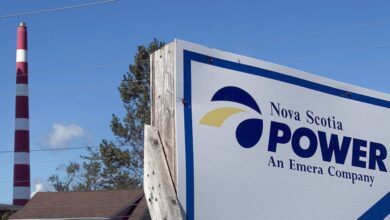HRM’s climate actions need to move faster to deal with extreme weather events

HALIFAX, N.S. — Fires, floods and storms — HRM has seen a great deal of extreme weather events this year.
In an annual report card presentation on HalifACT, Kevin Boutilier, HRM clean energy manager, reported that staff are looking at ways to move some key climate adaptation and resilience actions forward faster than planned or anticipated.
Investing in adaptation or resiliency projects is incredibly important, he said. According to the Canadian Climate Institute, every dollar invested in preparation saves about $15 in avoided recovery costs.
“And this hits close to home as recovery costs to HRM through the last year of Fiona, the wildfires and floods is topping out at over $20 million.”
In his report, Boutilier said the current tracked costs to the municipality from post-tropical storm Fiona in Sept. 2022 alone are $4.4 million and counting.
That might sound like a lot, but that’s far from what those disasters have cost, said Coun. Pam Lovelace (Hammonds Plains – St. Margarets).
“That might be an initial cost for the municipality but it’s huge for the community, absolutely huge,” she said.
“I don’t want to minimize the cost of those disasters as only being $20 million as it far, far surpasses that.”
Coun. Sam Austin (Dartmouth Centre) wanted to know how staff are going to move more of these actions along.
Boutilier responded that eight working groups are working on those actions in the red and yellow zones (some progress and minimal/no progress) so they can go to council and ask for specific support as needed.
He said that HalifACT has been recognized as one of the most ambitious plans in the country and has won national awards. He said he gets a lot of calls and interest from other cities in replicating parts of it and other HRM programs like Solar City.
“This is some of the most important work, in my opinion, that we’re doing,” Austin said. “History will not be kind to us unless we get ourselves in order because we have delayed and we chose not to do things, collectively as a society.”

Report card
In the third annual report card, — HalifACT was initiated in June 2020 — as of March 31, 2023, 36 per cent of the actions are considered on track. Six actions show minimal to no progress, three are contingent on other partners (like other orders of government) and 12 are considered “future actions.” Last year, 30 per cent of actions were on track.
“It’s only been three years … so I’m actually looking at this going 36 per cent on target and this is a really, really long list of things we can’t necessarily control,” Lovelace said. “I think overall we’re doing well hitting these targets.”
She said she was glad to hear that a contract for public electric vehicle chargers for should be signed this spring, and that it is a big deal for many residents.
Some of the HalifACT targets are:
- a municipal target of net-zero emissions by 2030.
- a community-wide target of a 75 per cent emission reduction from the baseline year of 2016 by 2030.
- net-zero community-wide emissions by 2050.
- retrofit all existing municipal buildings by 2040.
- achieve net-zero municipal operations by 2030.
- achieve net-zero water and wastewater operations by 2030.
Halifax Transit’s first electric bus arrived today! 🎉 Electrifying the #hfxtransit fleet supports the goals of HalifACT: the municipality’s ambitious, long-term climate action plan. Stay tuned for future updates! More info: https://t.co/RoytHEJJWr pic.twitter.com/WLQu1rNka6
— hfxgov (@hfxgov) December 4, 2023
Electric buses rolling in
The first of 60 electric buses HRM ordered from a Quebec company rolled into town this week, which will be used primarily for training purposes as others arrive.
Boutilier explained that the e-buses can go much farther on fewer units of energy so the emissions will be far less than gasoline-powered vehicles.
They’ll be based out of the Ragged Lake terminal which has undergone a full net-zero expansion design. The expansion will include charging infrastructure, rooftop solar and air-to-water heat pumps. When all this work is done, the energy usage will be 70 per cent less.
Emissions going down
Since the baseline year of 2016, both corporate and community emissions have gone down.
Corporate emissions relate to HRM buildings, street lighting, and vehicles owned and operated by the municipality. It doesn’t include transit or solid waste. Corporate emissions have gone down 22.7 per cent since 2016.
Community emissions are from all energy use in the municipality which includes private vehicles, transit, heavy transport, energy generation and more. That has gone down 10.7 per cent since 2016.
Climate action tax
A three per cent climate action tax was approved in 2022 to directly support the first four years implementing HalifACT. The money has been primarily used for purchasing electric vehicles and buses, constructing net-zero buildings and to leverage funding from the private sector and other levels of government.
In the 2022-2033 budget, there was more than $76 million available and more than $74 million was spent or committed to projects like flood mitigation, electric buses, public charging stations and Shore Road resilience improvements.
On Thursday, the committee forwarded the report to Halifax Regional Council for further discussion.



